II THE CAMPAIGN FOR CMC | RESPONSIBLE LEADERSHIP
III
crescit cvm commercio civitas






t Claremont
McKenna College, we are fond of saying that we stand on the shoulders of giants. And in our short 75 years, we have stood on the shoulders of many giants. Benson, McKenna, and Pitzer to name just a few. But we also have stood on the shoulders of many who most of us cannot name. As we come to the close of the most successful Campaign in the history of any liberal arts college, we should remember some of these unheralded CMC giants.
As early as 1926, there was a vision for an undergraduate college that would provide a broad education in private and public affairs, emphasizing business, economics, and government. In June 1946, the Board of Fellows of The Claremont Colleges, the governing body created in 1925 by Pomona College to oversee what today we call “The

A
1
Consortium,” authorized the opening of an undergraduate school for men.
But the opening was provisional. It authorized founding president George C.S. Benson to hire a handful of faculty and a few staff, and enroll up to 100 students. However, before the Board of Fellows would vote to approve the permanent establishment of the new school as a separately governed independent institution, it required that the new school raise at least $1 million in endowed funds.
Pledges were made by Mrs. Marie Rankin Clarke ($625,000) and Mr. and Mrs. Russell K. Pitzer ($250,000), totaling $875,000. However, a significant portion of each gift was conditional on the other, as well as on additional funds being raised. The new board worked feverishly to raise the remaining required $125,000, and after exhausting every potential source of funding, the total stood at $960,000. Disappointed, the Board of Fellows began
to question the viability and idea of the new college.
At this critical moment, four founding trustees—Garner A. Beckett (chair), Edward D. Lyman, Henry T. Mudd, and P.G. Winnett—volunteered to guarantee the shortfall by each pledging an additional $10,000. Without this final act of faith in the mission and purpose of the new college, today there might not be a Claremont McKenna College.
We now stand at the finish line of the historic $1 billion Campaign for CMC: Responsible Leadership. The two-thirds of CMC’s alumni who contributed to this Campaign have made a critical investment in future generations of CMC students and faculty by further endowing the Campaign’s three pillars: Honoring Our Leadership Mission, Preparing Leaders Through Integrated Sciences, and Expanding Student Opportunities.
Many, many gifts made this Campaign a success. And every gift is critical. We give because we believe in the idea of Claremont McKenna College. We believe in our mission of preparing students for thoughtful and productive lives and responsible leadership in business, government, and the professions. We all should be proud of that mission and what it continues to accomplish. And we should never forget that every gift, say a $10,000 pledge at just the right moment, has the potential to change history.
Crescit cvm commercio civitas.
David Hetz ’80 P’10 is Vice Chair of the CMC Board of Trustees and Co-Chair of the record-breaking Campaign for CMC: Responsible Leadership. He was also Co-Chair of The Campaign for Claremont McKenna, which raised a then-record $635 million upon its conclusion in 2013.
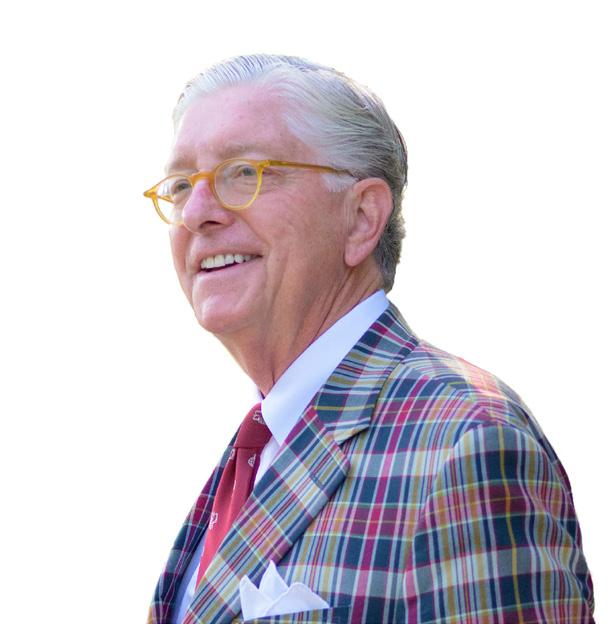
2

3
CMC’s founders aspired to create the most effective model for educating students, forming a residential liberal arts college distinguished by focused academic programs, small class sizes, close facultystudent interaction, and an unwavering commitment to responsible leadership.
For more than 75 years, this Original Idea—a distinctive model for a rationally balanced undergraduate education to meet the political, economic, social, and cultural needs of our time—has provided a powerful path for the sustained success of CMC students, faculty, and alumni.
Furthermore, the College’s founding vision and focused mission has created a foundation for incredible evolution, growth, and innovation as one of the nation’s leading liberal arts institutions—a place where emerging leaders continue to demonstrate performance and pragmatism that is authentically CMC.
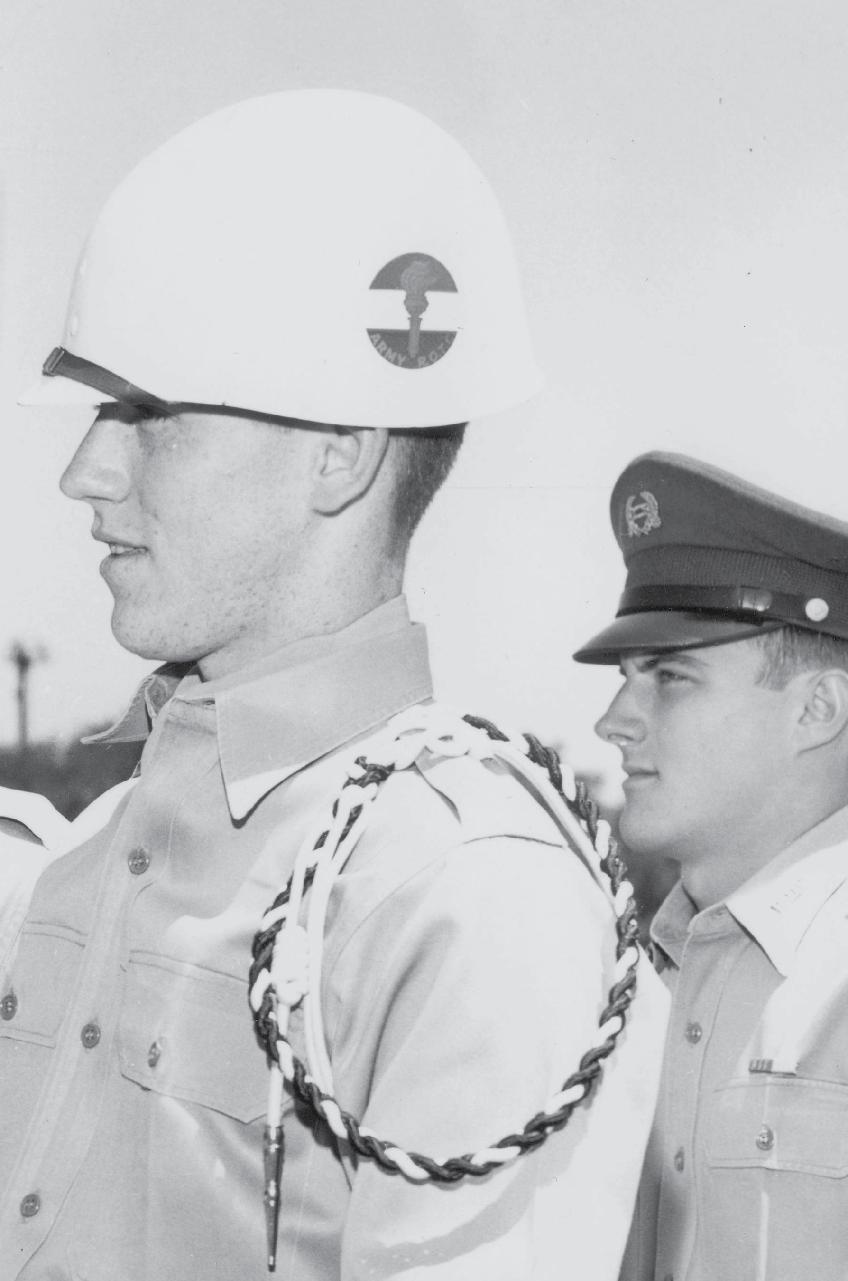
4


5
During ImpactCMC in October 2022, the Kravis Center Living Room officially became known as The Massoud in honor of Marc Massoud P’89, a beloved Accounting professor who retired in 2023. In addition, Massoud’s legacy is preserved with funds for student support. These distinctions not only recognize Massoud’s profound influence on the CMC community for more than four decades, but aptly demonstrate how powerful the presence of one person can be in the lives of so many students.
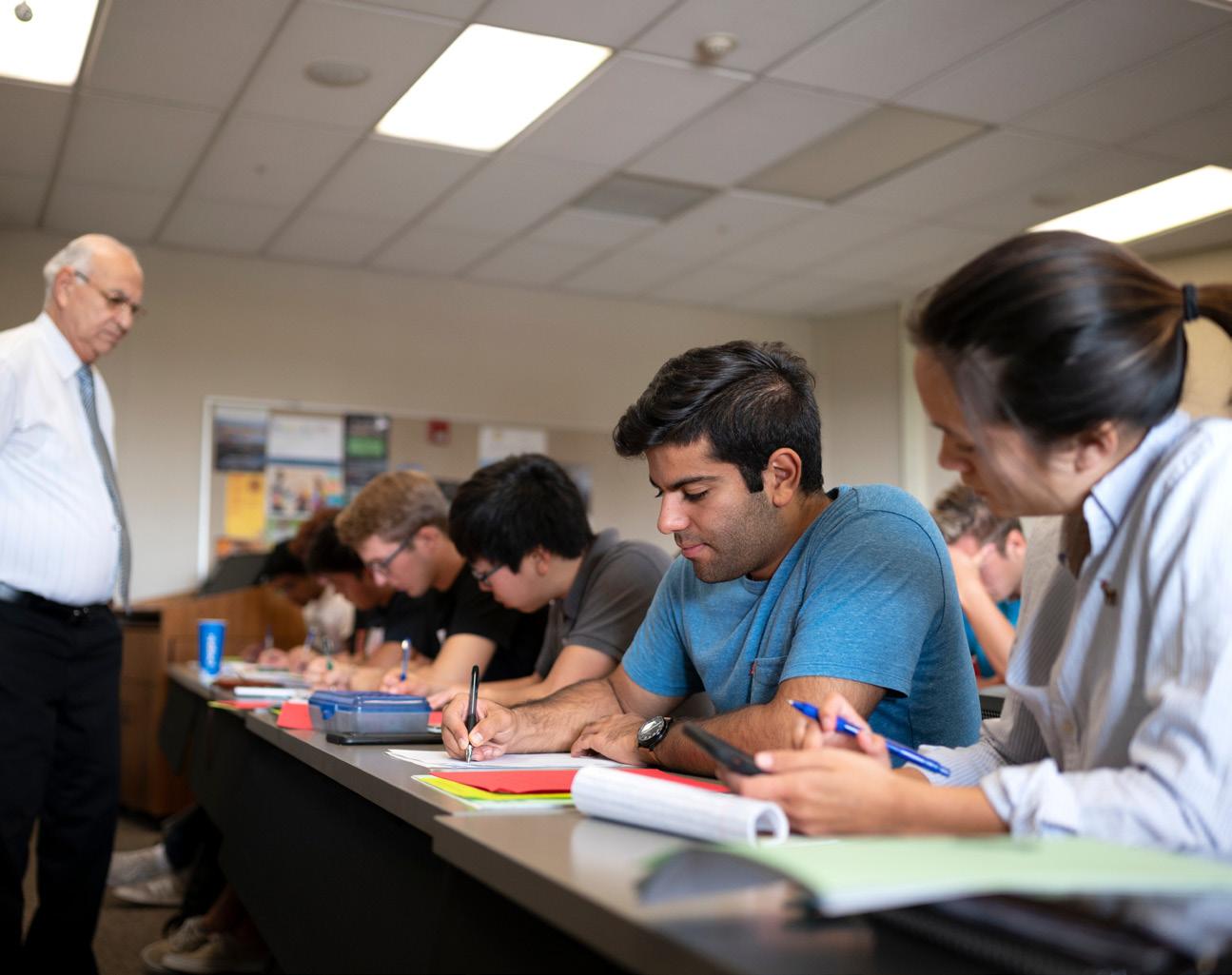
“He represents who we are at CMC and defines the standard of excellence that we all should strive for, not just in the classroom, but as good human beings,” said former Massoud student, Stella Ho ’97.
Joe Massoud ’89, Marc’s son, said that for 80 percent of his life, his father has been an award-winning professor at CMC, noting that he “found the perfect job and the perfect place to do the job.” To illustrate the impact that his father has had on the CMC community, Joe shared that every year he runs into at least five people—from his father’s students, to his father’s students’ parents—whose lives he has touched.
“And I always find myself shaking my head and chuckling to myself that this kind and simple guy has had such an impact,” Joe said.
I had big dreams, but I never dreamed I’d have an academic chair and a beautiful room at a wonderful school named after me.
6 HONOR MISSION
– MARC MASSOUD P’89, ROBERT A. DAY DISTINGUISHED PROFESSOR OF ACCOUNTING
Someswar Amujala ’23 still can’t believe that his name pops up alongside Professor Angela Vossmeyer when he types it into Google Scholar.
The recent CMC graduate and Economics professor are co-authors of the published research paper, “Digitization and Data Frames for Card Index Records,” in the journal Explorations in Economic History. Co-authoring a research paper as an undergraduate is a rare feat, but one that Vossmeyer encouraged after recognizing Amujala’s data analysis talents at CMC.
“Professor Vossmeyer is always very good at thinking about what I’ve done, building upon those skills, and really expanding my knowledge,” said Amujala, an Economics and Data Science major who worked as one of Vossmeyer’s research assistants.
Amujala’s collaboration with Vossmeyer is just one example among many graduate-level research opportunities provided by CMC where students work alongside professors on a range of projects that span all disciplines. Their paper develops a research methodology for “converting historical records into usable data frames for future statistical and textual analyses,” Vossmeyer said. It also means that researchers around the world can look at how they did the work and apply data analysis tools to different versions of their own problems.

It’s gratifying to package a research project that you know is helping other people.
7
– ANGELA VOSSMEYER, ROTHACKER FAMILY ASSOCIATE PROFESSOR OF ECONOMICS AND GEORGE R. ROBERTS FELLOW
LASTING IMPACT
Two beloved CMC research institutes are celebrating major milestones this year. The Rose Institute of State and Local Government marks 50 years of its core mission to pursue research opportunities for faculty and students that promote greater public understanding of policy issues. From its beginning, the Rose Institute has stood out for its emphasis on California as “such a large and important state that creates policies that have ripple effects beyond its borders to the rest of the country,” said Director and Government professor Ken Miller. Also, the Mgrublian Center for Human Rights is honoring its 20 years as a preeminent place for students to study important moral and ethical topics in a holistic way. Director and History professor Wendy Lower is accustomed to first-year students telling her CMC was their dream school because of the Center. “We were among the very first—and still are one of a very few dedicated research institutes—doing human rights, Holocaust, and genocide studies at the undergraduate level.”


Investment = Impact 23 NEW NAMED FACULTY ROLES AS ENDOWED PROFESSORSHIPS 8
INSIDE THE OPEN ACADEMY

WITH HEATHER FERGUSON AND JON SHIELDS OPEN ACADEMY FACULTY CO-DIRECTORS
Historically, how have Open Academy commitments of Freedom of Expression, Viewpoint Diversity, and Constructive Dialogue been integral to CMC?
Ferguson: The liberal arts, especially at CMC, urges us all to reengage with wonder, curiosity, and exploration. It jostles us out of our comfort zones, challenges our assumptions, but also provides the tools to shape moral ideals that guide us into the future. The true work of a liberal arts college experience, despite appearances, is not the tests, papers, problem sets, and projects; but rather the willingness to open up to new modes of understanding each other and the world around us.

Shields: The CMC motto “civilization prospers with commerce” was always understood by the most forward-looking College founders to include the commerce of ideas. And from the beginning, the College has also been devoted to educating future leaders who need to be fluent in the controversies and problems that shape our public life. Those commitments had a formative influence on the College and the institutions it built, like the Athenaeum and research institutes.

9
Investment
= Impact 700+ SPEAKERS WELCOMED TO THE ATHENAEUM OVER THE LAST EIGHT YEARS
How is CMC equipped to deal with the “forces that pull us apart”—especially in these polarized political times—that The Open Academy states it is committed to addressing?
Ferguson: The intimacy of a small liberal arts college is a precious resource, one that CMC faculty, students, and staff have fully committed to. Simply by signing up for the CMC experience, every single individual in our community has signaled the willingness to engage with each other in sustained—and often intense—encounters in dorms, classrooms, offices, and at extracurricular events. As a faculty member, I am often awed by the range of voices that shape the classroom experience, and these voices challenge me and students to constantly evolve in our understanding of regional and global events.
Shields: I think it also helps that we’re not seeking unity. There isn’t a widespread desire for intellectual conformity on campus, either among faculty or students. So, there isn’t a sense that our disagreements are a problem that should be wished away or remedied. That’s an important starting place. It opens a space for us to learn from and challenge one another.
Heather Ferguson is an associate professor of Ottoman and Middle Eastern History. Jon Shields is a professor of Government who teaches courses on issues such as policing, free speech, and culture wars.
Open Academy programming continues to evolve, with firstyear dinners, Saturday Salons, and “flipped” Athenaeum structures as just a few notable examples having an impact on CMC students.
The Salons, which launched in fall 2022, are small gatherings of faculty and students that encourage discussions on topics curated by professors and research institutes. Students have shared that the more informal gatherings, which sometimes continued with dinner at a CMC professor’s home, helped broaden views and create stronger bonding experiences.

To deepen dinner table conversation at the Athenaeum, some Open Academy programs have also featured a “flipped” structure with the main discussion or panel program taking place before dinner.
“I really believe in the mission of The Open Academy and I hope the program only grows more,” said Rowan Gray ’26. These programs “epitomize what it means to get a modern liberal arts education and it’s (what) made me and a lot of my peers so interested in coming to CMC.”
HONOR MISSION 10

11
As part of its expanded focus as a national initiative, The Open Academy has partnered with CMC students and faculty on curricular innovation and engagement through a new Student Collaboration Project. Supported by a gift from Buzz Woolley ’59 P’90 P’92, the project kicked off last spring in partnership with Professor George Thomas of the Salvatori Center for the Study of Individual Freedom in the Modern World and Professor Stacey Doan of the Berger Institute for Individual and Social Development.
Thomas’ expertise on constitutional values, coupled with Doan’s research on resilient leadership and fragilities at the foundation of challenges that The Open Academy seeks to address, made them ideal partners. For example, a two-week residential program helped underrepresented students learn Open Academy concepts through various workshops and seminars. Sample topics included moral foundations, criticism versus cancellation, and threat reduction.
“The culture of CMC since its early days has placed great value on open discussions about diverse ideas. Coupled with this have
been opportunities for CMC students to participate in developing the life and culture of the institution. This project builds upon these foundations,” said Woolley, a CMC Life Trustee.

Woolley’s son, Scott ’92, also joined Trustee Steve Eggert ’82 P’15 and President Hiram Chodosh for an Alumni and Parent Engagement event in Orange County, Calif. to discuss Open Academy concepts of free speech and freedom of expression.
Noting that “a responsible civic life starts around dinner table discussions,” Chodosh addressed the responsibility of higher education to prepare young people for an engaged civic presence despite polarizing differences and fear, which often intimidate and shut down a student’s ability to engage in tough topics. Chodosh also discussed a recent gathering of 11 college presidents in an Open Academy-style workshop that covered such issues as how to measure success or failure and how to inspire, create, and develop proof points.
“The goal,” he said, “is to reshape our students’ musculature to deal with conflict— to ask good, neutral questions.”
Dialogue is at the heart of the CMC curriculum. In almost every class, professors take care to facilitate dialogue and discussion between students. Responsible leadership requires participating in difficult conversations and understanding ideas from a variety of disciplines … (and CMC) creates the environment where we can learn these skills.
—RUKMINI BANERJEE ’24 2022-23 MARIAN MINER COOK WOOLLEY ATHENAEUM FELLOW
12
Community, Purpose, and Play

CMC’s distinctive social warmth infuses itself in every aspect of student life—from our daily Athenaeum Tea to the spirit of varsity athletic teams; from a friendly greeting at Collins Dining Hall to a communal culture of academics and student activities that emphasizes the pure joy of learning and living together. The College’s high-touch approach further manifests itself in Dean of Students fixtures like Welcome Orientation Adventure (WOA) trips for first-years, dialogue and identity development at the CARE Center, and peer-to-peer relationships and habit building through the quintessentially CMC experiences of Romero Success Coaches.
Rafael Otero ’25 loves the benefits of CMC’s tight-knit community, particularly how quickly students get to know one another inside and outside the classroom. When he discovered the Romero Success Coaches program through the Dean of Students office, he admits that part of the motivation was getting the chance to meet—and even better, help—more of his peers. “I knew all too well the difficulties of the high school to college transition, and luckily had older soccer teammates to help guide me through stressful times. That help was so important to me early on, and I wanted to repay that favor to the entire student body.” As a success coach, Otero said he focuses on offering a sense of belonging by reminding peers that “they are at CMC for a reason. I just really appreciate how DOS and programs like this are positioned to individually support each student throughout their CMC journey.”

13 HONOR
Investment = Impact
SINCE THE
IN 2016
MISSION
80+ STUDENT FELLOWS
CARE CENTER'S LAUNCH
Once students are here, it’s on us to help them refine what it is that they’re trying to get out of this experience. And part of that transition—and what I think makes CMC different from other colleges—is that we want them to think about the purpose and meaning of their time here. We’re much more invested in asking, ‘What is it about these opportunities that will matter to you? And how does that translate into a stronger community and sense of belonging at CMC for every student?’
 —DIANNA “DT” GRAVES ’98, VICE PRESIDENT OF STUDENT AFFAIRS
—DIANNA “DT” GRAVES ’98, VICE PRESIDENT OF STUDENT AFFAIRS
14


15
In June, members of the Claremont-Mudd-Scripps women’s tennis team (at right) celebrated a historic gathering at the White House—the first-ever College Athlete Day honoring national champions across all three divisions of the NCAA.

More than 1,000 athletes gathered on the South Lawn for the special visit, with the CMS women’s tennis team serving as one of 47 championship teams representing 19 NCAA sports. The CMS women’s tennis team won its second straight national title in May after defeating Chicago 5-3 at the USTA National Campus in Orlando, Fla.
Erica Perkins Jasper, William B. Arce Director of Athletics, Physical Education, and Recreation, said it was “wild” to see the long lines of champions on the lawn, taking photos, getting to know one another, and soaking up the festive atmosphere. It was a moment they’ll always remember.
“Our students put in such long hours and these teams really become a family to one another,” Perkins Jasper said.
PREMIER PROGRAM
Buoyed by the second-highest point total in the nation during the spring season, CMS Athletics earned another Top 10 finish (10th overall) in the final Learfield Directors’ Cup Division III standings for the 2022-23 academic year. The program also reclaimed the 2023 SCIAC All-Sports Standings trophy from Pomona-Pitzer after having its 12-year streak (prior to the pandemic) broken.
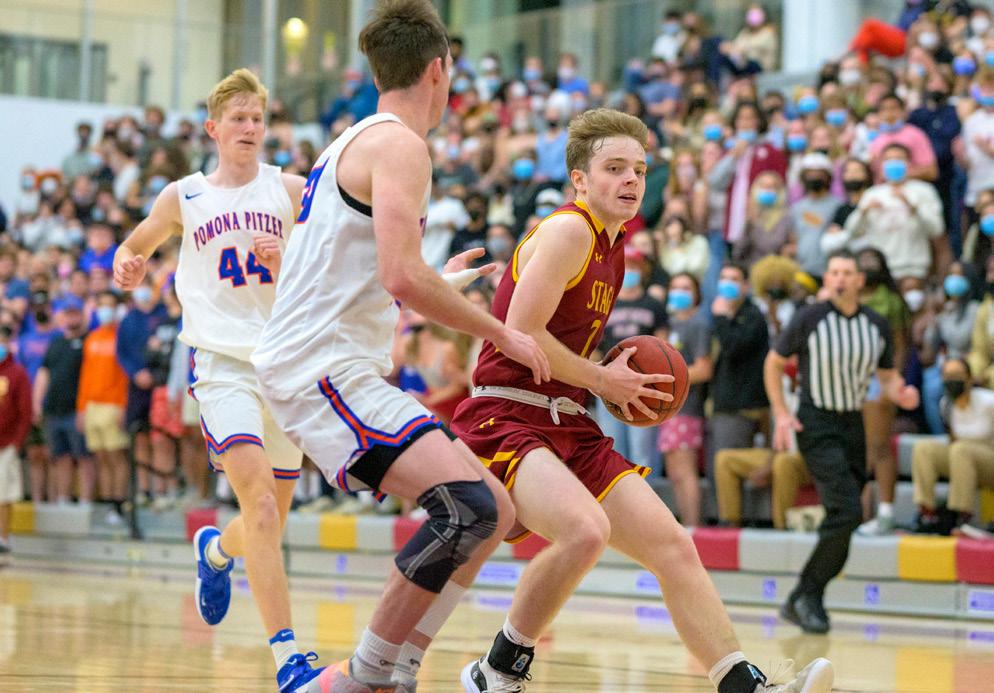

Investment = Impact
4,200+
16
DONORS MADE A GIFT TO SUPPORT CMS ATHLETICS
As CMC completed its record-breaking Campaign, we also ended our incredible 75th Anniversary program. I’ll always remember how these two moments came together—and what our Anniversary celebrations meant to the College.
So many of our community members participated by giving back. For students, faculty, alumni, parents, friends, or neighbors, giving back was a central theme related to honoring our mission. Whether it was attending professor-led talks, hearing from speakers at the Athenaeum, joining in chapter events, returning to campus by attending Alumni Weekend, or cheering on the award-winning Rose Parade® float, we came together in record numbers.
Honoring our mission also meant alumni like me had a conduit to support students and faculty now and in the future. How can we continue to give back? Giving back can mean attending a new student party to connect with incoming freshmen and their families. It can mean a donation of any size to the Alumni Fund to support programs, scholarships, and opportunities. It can mean mentoring a student or recent graduate by offering advice and expertise. This power of our collective CMC community has resulted in outstanding student outcomes, a strong endowment, the ability to attract the best and brightest students and faculty, and a sterling reputation in the higher education arena.

Supporting CMC’s mission, especially through my role with the 75th Anniversary, has been deeply rewarding. I am grateful for the education I received at CMC and for the opportunities that were made available to me by alumni and others connected to the College. My career started because two alumni returned to campus to recruit students for openings in their investment banking firm. This opened the door for me to establish a career I never would have had without their support. Helping students and alumni by using my time, talent, or financial contributions feels like a natural way for me to express my gratitude.
– Sue Matteson King ’85 P’18 is a CMC Trustee and served as Chair of the 75th Anniversary Committee.

17 HONOR MISSION
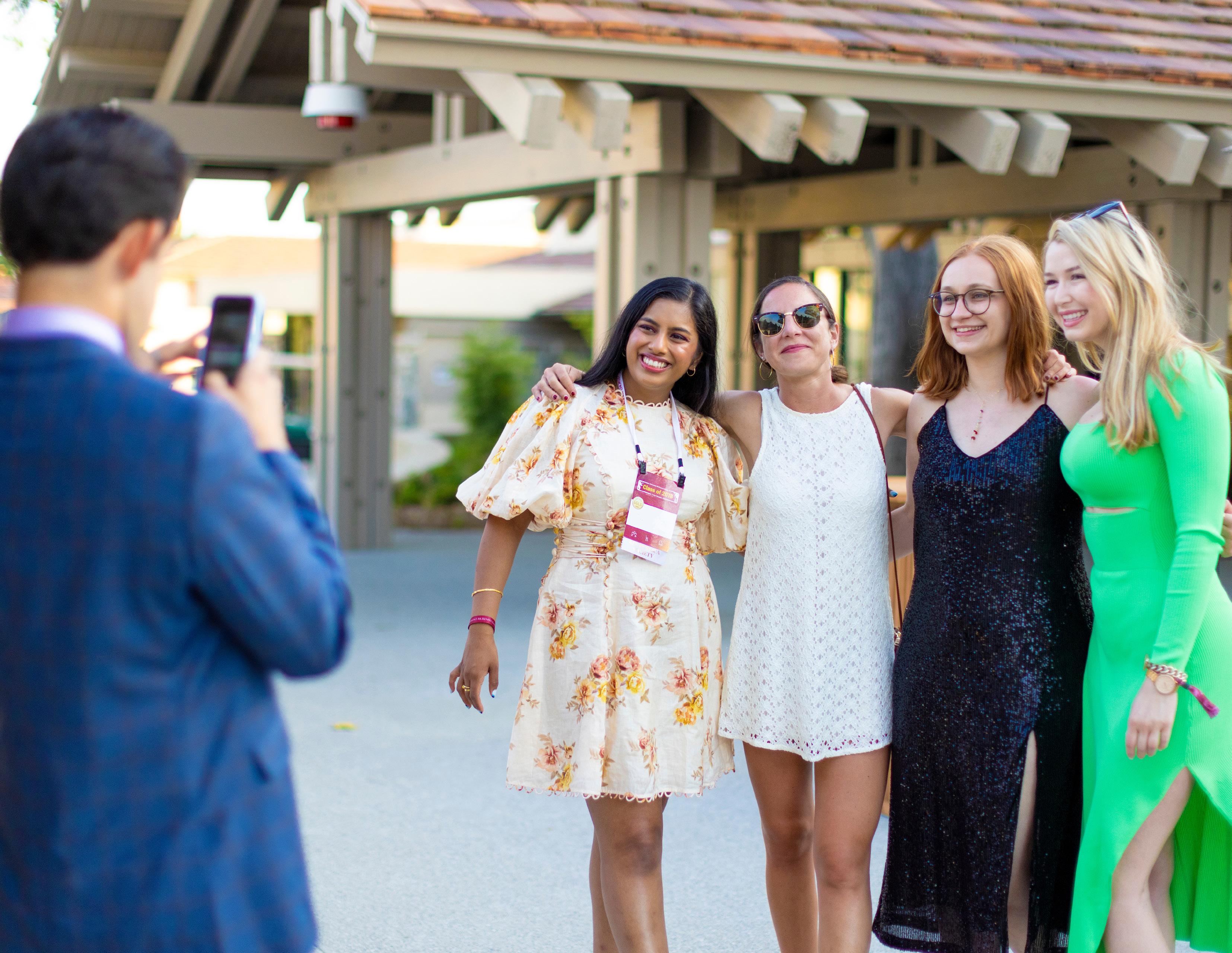
18

19
Innovation has transformed every aspect of society, linking the cultivation of responsible leadership in business, government, and the professions with rapid advances in science, computer science, and data science.
Rooted in CMC’s foundational liberal arts and leadership mission, the new Kravis Department of Integrated Sciences—housed in the stunningly designed Robert Day Sciences Center—will leverage computation as a powerful vehicle for discovery and systems solutions while integrating CMC’s core strengths in the social sciences and humanities.
This interdisciplinary approach will prepare CMC’s scholar-leaders at the critical intersections—known and unknown—of science, economics, policy, ethics, and other important fields to take on the biggest challenges and opportunities of our time.

20
Foundational gifts from Robert Day ’65 P’12 (including a lead gift from the W.M. Keck Foundation) and Henry ’67 and Marie-Josée Kravis have catalyzed the trajectory of CMC’s integrated sciences ambition. Positioned at the eastern edge of campus, the Robert Day Sciences Center (RDSC) broke ground in October and is slated for completion by the spring of 2025. The iconic building will serve as a new anchor point to bring the entire campus community—not just science majors—together to meet, create opportunities, and exchange ideas about the impact of science on society, be it neuroeconomics, climate policy, or the ethics of algorithms.
As conceived by world-renowned architecture firm BIG-Bjarke Ingels Group, the RDSC’s structure is designed as a stack of two volumes, or rectangle “blocks”—two per floor—with each pair rotated 45 degrees from the floor below. A skylit central atrium stands at the heart of the building, providing direct views into classrooms and research spaces from all levels. Eight outdoor terraces will offer sweeping views of the nearby mountains. The open, accessible, light-filled design is intentional; a metaphor for the conversations between core disciplines and the College’s innovation for undergraduate sciences education.
It is our hope that the Robert Day Sciences Center will not only provoke new conversations between scientists, but that it may also stimulate (all) liberal arts students to take a deeper interest in the sciences and vice versa. The analytical embracing the experimental, rationality intersecting with creativity.
— BJARKE INGELS
LEAD ARCHITECT OF THE RDSC AND FOUNDER/CREATIVE PARTNER OF BIG-BJARKE INGELS GROUP
Investment = Impact
$160M IN SUPPORT OF THE ROBERT DAY SCIENCES CENTER

21
INTEGRATE SCIENCES


22
TRACK PROGRESS on the RDSC by viewing the latest construction photos, videos, and updates at www.cmc.edu/rdsc.
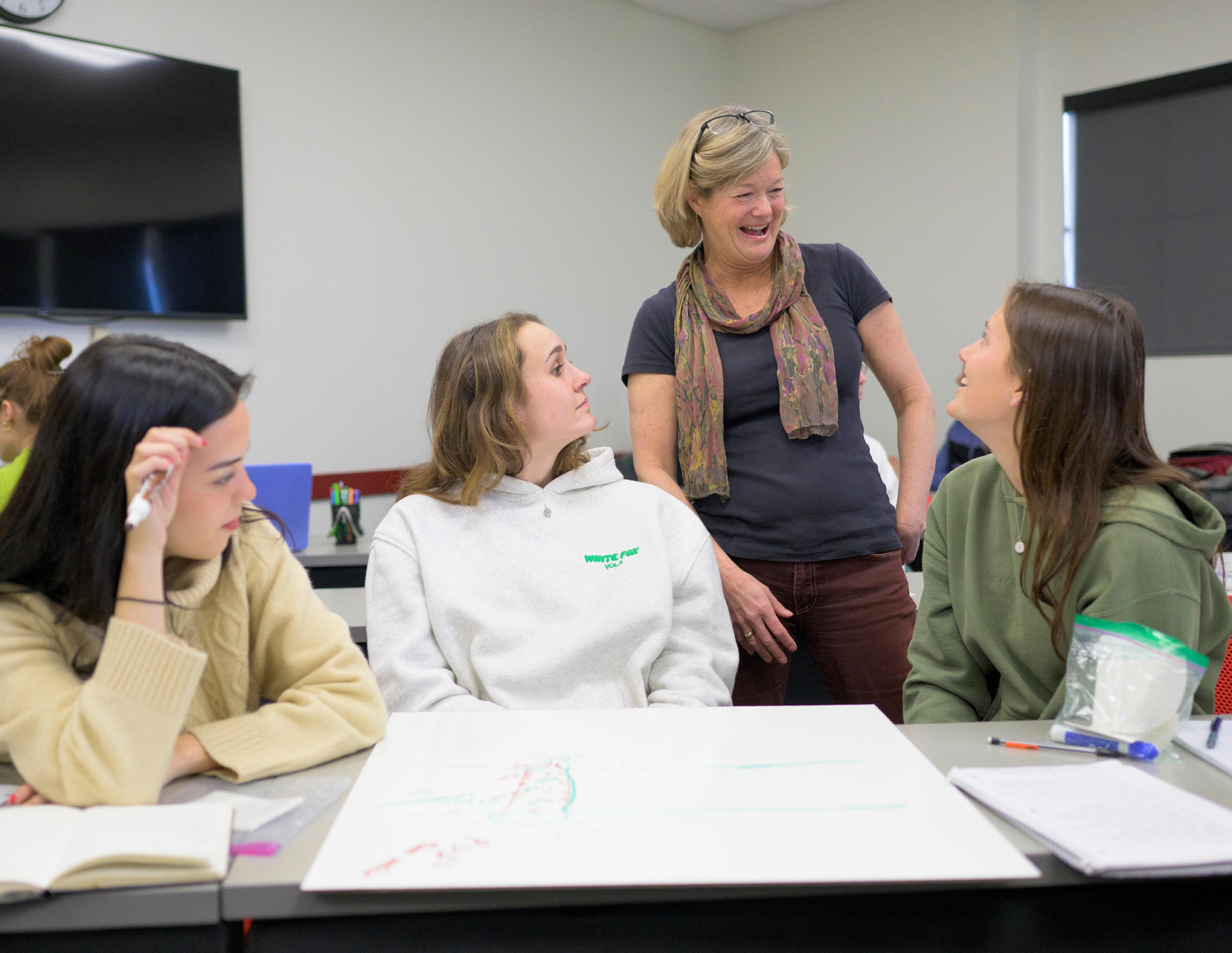

23
FIRST OF ITS KIND
CMC’s future leaders—whether they plan to become economists, politicians, journalists, consultants, or CEOs—need to learn science by doing science. With its organization around overlapping foci (health, brain, planet) rather than traditional scientific disciplinary units, the Kravis Department of Integrated Sciences will instill confidence in all CMC graduates to dive headfirst into computational methods that are now ubiquitous to all knowledge—the foundations of programming, data visualization, statistics, and machine learning.
The future is now. Thanks to a successful spring semester pilot course, “Codes of Life,” the Kravis Department of Integrated Sciences (KDIS) is officially live. The pilot—a collaboration between KDIS professors Ran Libeskind-Hadas and Emily Wiley, along with Zach Dodds from the Computer Science department at Harvey Mudd College—was framed by the growing challenge of antibiotic resistance in bacteria. Wiley secured a partnership with a local agency to analyze resistance genes and bacteria through the water reclamation process, with the goal of encouraging students to consider influencing public policy as they worked on their final projects. Students deployed various methodologies, such as DNA isolation, amplification, and sequencing.
Anushka Shah ’26, who is majoring in Economics with a Data Science sequence, found the course’s biggest value was “the integration of biology and computing concepts” to explore a real-world situation. “The critical thinking processes developed in this class are invaluable in any setting and set the foundation for how to think about science from different perspectives—whether as a person in the finance sector or as a business person,” she said.
Bryan Soh ’25, who intends to dual major in International Relations and Public Policy, was drawn to “Codes of Life” because of its focus on using computational methods to solve pertinent scientific issues. “Having some sort of proficiency in data handling is essential, and that’s what I’m hearing from CMC alumni” who are currently in the workforce, he said. “It’s a skill set that can open up a lot of prospects.”

Adapting what they’ve learned from spring, Libeskind-Hadas and Wiley are teaching more CMC students during “Codes of Life” in the fall. The course will also include the addition of a research project addressing a current societal issue.

24
INTEGRATE SCIENCES
INSIDE INTEGRATED SCIENCES
RAN LIBESKIND-HADAS
FOUNDING CHAIR OF THE KRAVIS DEPARTMENT OF INTEGRATED SCIENCES
What did you learn from teaching “Codes of Life” in the spring?
The approaches in this course reflect some important aspects of the vision for KDIS. In particular, we’re teaching content just in time to help students explore questions that require multiple disciplinary lenses. For example, we’re teaching them the chemistry that they need just in time to understand the biology of the genome. Similarly, we’re teaching computation just in time so that they write their own programs to analyze genetic data (from soil or water samples that they collected themselves and processed in the lab) and gain insights into questions like, “How prevalent are antibiotic-resistant bacteria in soil samples at The Claremont Colleges?”
How special is it to be launching a new integrated sciences department with this course—and the promise of more to come?

When you look at the big societal issues in the public sphere, science informs them all. And CMC already helps students take advantage of very broad interests and skills through a strong leadership lens. This is what compels me the most in (the) creation of KDIS. Science has something to offer the liberal arts by way of its thinking, processes, and methodologies, but it also needs to be informed by the humanities and social sciences. After all, science serves humanity. Science serves society.
Investment = Impact $220M IN SUPPORT OF THE KRAVIS DEPARTMENT OF INTEGRATED SCIENCES
25
GLOBAL IMPACT: In June, Professors Ran LibeskindHadas (left) and Branwen Williams (second from left) led discussions on climate change during CMC's Worldmeet 2023 trip to Iceland. The trek to the “land of fire and ice” offered an opportunity to inform and expand their own research on sustainability and renewable energy, as Iceland generates more than 99 percent of its electricity from renewable sources. “During Worldmeet, I was reminded that the impacts of climate change are felt locally—and also that the successful migration and adaptation strategies to climate change must occur locally,” Williams said. “It was a treat to have those rich conversations with our broader CMC community.”
As part of its commitment to plan, develop, and lead innovative new curricula at CMC, the Kravis Department of Integrated Sciences welcomed seven outstanding scientists and educators (photo above, left to right after Professor Libeskind-Hadas) in May.

• Branwen Williams, Director of the Roberts Environmental Center, studies geochemical and schlerochronological techniques to generate environmental reconstructions from marine proxy archives. Her current research: the processes that drive high-latitude change through generation and interpretation of seawater reconstructions from the skeletons of coralline algae.
• Shibu Yooseph studies computational biology and bioinformatics. His current research: the design and development of efficient algorithms for largescale biological data analysis.
• David Nembhard, KDIS Director of Applied Science Programs, studies behavioral operations, augmented learning and training systems, and human analytics. He will be responsible for planning and developing the Workshop (a KDIS analog to a makerspace), contributing to the 3+2 BA/BS program, and co-teaching or guest lecturing.
• Jason Keller studies the flow of carbon and nutrients through ecosystems and how ecosystems respond to global change. His current research: the controls of anaerobic decomposition and greenhouse gas dynamics in a variety of wetlands.
• Lars Schmitz studies the visual system of vertebrate radiations with an integrative and interdisciplinary approach. His current research: the effects of aquatic-terrestrial transitions on the evolution of visual systems.
• Paul Nerenberg studies problems in computational chemistry using physics-based simulation methods. His current research: to design force fields that provide the most accurate molecular dynamics simulations possible, particularly for molecules of interest in biology and medicine.
• Emily Wiley, KDIS Director of Program Development, studies the epigenetics and gene regulation underlying cell differentiation. She will contribute to faculty recruitment, foundational science courses, undergraduate research opportunities, mentoring programs for new faculty, and a student advising program.
26
Elena Seifert ’19 was inspired to apply to CMC by her brother Oliver ’16, who upon arriving to Claremont a few years earlier, majored in Computer Science and is now the director of product at a tech start-up. Elena followed with a Biology major and will be graduating from medical school in May 2024. For their parents, Gesine and Thomas Seifert P’16 P’19, supporting the creation and construction of the Robert Day Sciences Center felt like a natural way to give back and support CMC’s interdisciplinary leadership. “We feel so lucky that Oliver and Elena were able to get a stellar liberal arts education at CMC that allowed them to become wellrounded and critically thinking adults while also majoring in the sciences,” Gesine said. “They never felt tunneled in their STEM majors with ample opportunities to explore other subjects. It is important to us that future generations of CMCers will have similar opportunities both in the classroom and in terms of career development that are unique to CMC.”


27
Scientist. Strategist. Innovator.
Those three descriptions alone don’t begin to cover the legacy of Thomas B. Neff ’76 P’21. But they’re an appropriate starting point considering all that he accomplished as the pioneering leader of FibroGen, the biopharmaceutical company he founded in 1993.

Neff’s scientific contributions were enormous; he was named inventor on more than 130 U.S. patents, patent applications, and their foreign counterparts. His devotion to CMC scaled similar heights as a trustee, mentor, and visionary leader—a void felt across the tightknit community when he died suddenly in 2019. Board Chair David Mgrublian ’82 P’11 called Neff “the living embodiment of CMC’s mission in the sciences,” emphasizing that “Tom saw what CMC could be, and he did everything in his power to help the College realize this potential.”
“CMC opened Tom’s mind to the very wonder of learning. He loved CMC and felt that the school would benefit from an expanded version of science learning possibilities,” said Donna Wengert Neff P’21, Tom’s wife and a current CMC Trustee. “The Robert Day Sciences Center will undoubtedly further CMC’s mission, as well as create long-term value and growth opportunities. Tom would have been so thrilled to see this magnificent project become a reality.”

28
INTEGRATE SCIENCES
CMC's Future History
What does CMC’s future history look like? Pivoting off the Robert Day Sciences Center, a foundational gift from George ’66 P’93 and Linnea Conrad Roberts will reimagine the College over the course of the next decade and beyond.

The ambitious Roberts Campus expansion empowers CMC to realize all of its future academic, social, and residential opportunities, most notably by acquiring the entire 75-acre parcel (“The Pit”) that runs from Foothill Boulevard on the north, Arrow Route on the south, Claremont Boulevard on the west, and Monte Vista Avenue on the east.
Initiatives supported by the Roberts gift include: doubling the size of the campus footprint to 152 acres and further developing the east section through a series of pedestrian walkways; a “Sports Bowl” with athletic, recreation, and practice fields; academic and administrative buildings; and student housing, among other notable additions.

By shifting most of its athletic fields to an all-purpose Sports Bowl across Claremont Boulevard, it will allow the Robert Day Sciences Center to serve as a main axis to multiple parts of campus from the east. This will also focus academic, social, and residential activities while preserving the character and scale of the core, historic CMC campus from the former Mills Avenue to the west.
“Not many liberal arts colleges are in a position to build from scratch such a significant portion of campus and do so in a way that preserves its history while still building a campus of the future,” said Matthew Bibbens ’92, Vice President for Campus Planning and Capital Projects.
Investment = Impact
$153M IN SUPPORT OF THE ROBERTS CAMPUS EXPANSION
29
75 newly-developed acres, east of Claremont Boulevard
152 total acres, doubling the size of campus
» With these additions, CMC will be the largest campus in area of The Claremont Colleges

Phase 1
» Completion of Robert Day Sciences Center
» Extension of the current North Mall
» New academic and administration spaces
» Creation of new athletics and recreational facilities, starting with baseball and softball
» Additional pedestrian malls

30 THE ROBERTS CAMPUS

31
Beginning with President Hiram Chodosh’s 2014 introduction of The Student Imperative—a multi-faceted initiative aimed at addressing the problem of rising tuition costs in higher education—CMC has been guided by the expansion of opportunity as a powerful engine of social mobility. This commitment to opportunity has also led to a distinct CMC promise:
One, students are going to be able to afford the cost of attendance and the additional financial burdens of enjoying the full learning experience.

Two, students are going to have a complete and comprehensive experience that challenges them personally and professionally to emerge in roles of responsible leadership.
Three, students will end up with an immediate outcome, a post-graduate opportunity that places them on a strong trajectory for the future and creates a powerful return on the collective investments of the student, the family, the College, and all who support it.
32
Ryan Lenney ’25
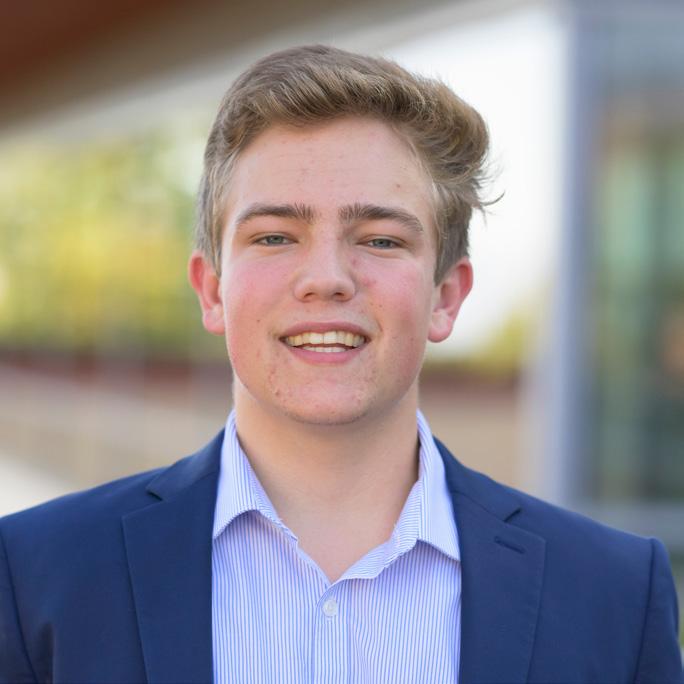
As part of his Appel Fellowship, Lenney lived in Helsinki, Finland for six weeks interviewing social workers about homelessness—particularly, how they’ve worked to solve the issue by using a housing first approach over a 10-year period. It’s a crisis Lenney, a McKenna Scholar from Mission Viejo, Calif., cares about in his own backyard. “The fellowship was an eye-opening experience that allowed me to explore another culture, as well as dive into an issue that I am passionate about.”
On campus, diverse viewpoints have also opened him up to looking at the world from new perspectives. “When we discuss the fundamental ways in which our societies operate, I am often surprised by the experiences of my classmates who grew up outside of the U.S. and in environments very different from my own.” These experiences are preparing Lenney for a successful and meaningful career in public service, he said. His primary interest is government or non-profit work, and thanks to experiences focused on real world issues—including research at the Rose Institute—he’s confident that “CMC is preparing me to perform effectively in whichever path I choose.”
Carol Nobili ’24
A native of Los Angeles, Nobili’s experience at the Soll Center for Student Opportunity has come full circle. As a career services mentor, she assists fellow students in reviewing resumes and cover letters in preparation for the next step after graduation. Additionally, she works closely with staff to ensure day-to-day operations run smoothy. Not surprisingly, Nobili has been able to utilize these same Soll Center resources to prepare herself for a bright future.
As an Economics major with plans to complete a Masters in Finance, Nobili hopes to pursue a career in management at a finance company. A summer internship as an investment banking summer analyst at Moelis & Company in New York is an important step toward her goals, she said. While Nobili notes that navigating her education and future can be challenging as a first-generation student, she knows the CMC community always has her back. “Before coming here, I remember reaching out to students on campus about what they thought of CMC, and every single person mentioned the support they received for opportunities. Thanks to the Soll Center, in particular, having access to amazing resources and advice has certainly held true.”

33 EXPAND OPPORTUNITY
Viola Hernandez Derbez ’23
From dinners at the Athenaeum to close interactions with professors, Hernandez Derbez noticed right away how CMC invested in its students as “whole people.” “The quality of CMC relationships matter. By fostering a tight-knit community, CMC allows us to know so many of our classmates and professors both inside and outside of the classroom. It makes a huge difference.”
Hernandez Derbez felt particularly supported as a member of the Robert Day Scholars Program (RDS) and Lowe Institute of Political Economy. The career support and guidance she received at RDS helped her navigate a foundational internship as a financial analyst at Apple.




A double major in Economics and Philosophy, Politics, and Economics, she also explored a wide range of themes and theories as a researcher and writer at Lowe. Her thesis, written with guidance from Professor Cameron Shelton, bridged several of her disciplines and passions: economics, political science, Mexican governance, and gender equity. “It was the most challenging yet fulfilling project that I’ve ever worked on, and I was humbled to receive the Robert Day School Award for Best Thesis in Economics,” she said. “It summed up my CMC experience perfectly: Aim high, work hard, have fun, and never stop learning.”
Sponsored Internships and Experiences


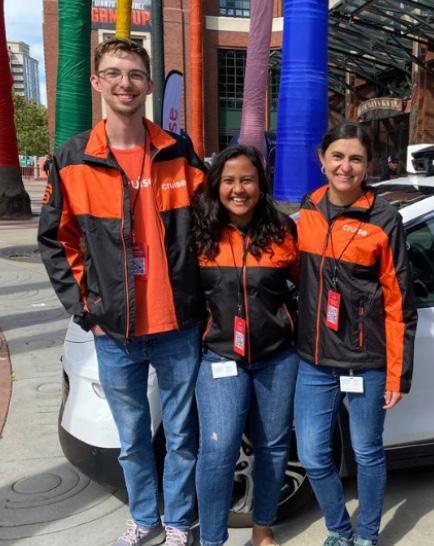

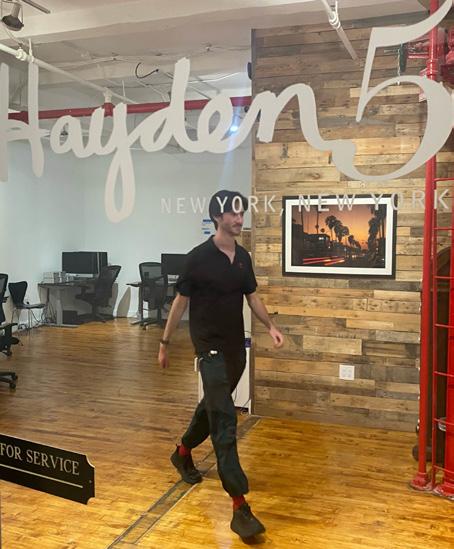
» Summer 2023: 466 students
» Total support: $2.2 million
» Average award: $4,664
Investment = Impact $215M IN SUPPORT OF FINANCIAL AID
Since 2016, nine out of 10 CMC students have engaged in an at least one internship prior to graduation—23 percent higher annually than the College’s peer institutions.

34
INSIDE STUDENT OPPORTUNITIES
SOLL CENTER FOR STUDENT OPPORTUNITY
WITH URSULA DIAMOND AND BRUCE SOLL ’79 P’12 P’15 P’17
What are some of the key evolutions and approaches at the Soll Center for Student Opportunity that have led to successful outcomes?
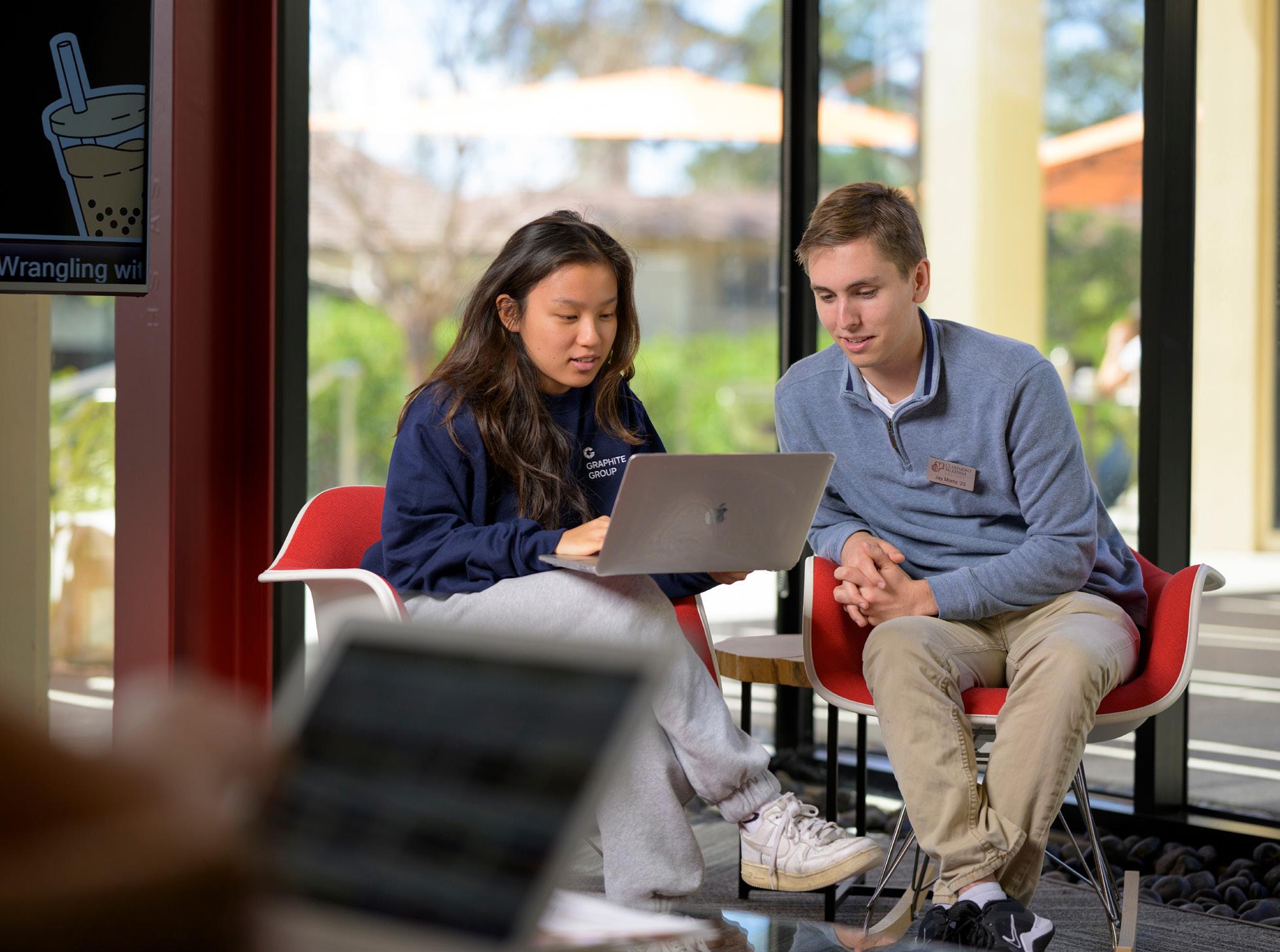
Diamond: I like to emphasize the networking piece with students—use the CMC network and start on campus. So, if you’re a first-year student, you should be talking to the sophomores and the juniors, First-Year Guides and RAs, really starting that informal networking practice with the people who are right in front of you. There’s a lot of knowledge and experience there. I also like to encourage exploration, especially at the beginning of college. Get to know yourself by trying out different experiences, whether an Appel Fellowship, Gould Creative Works Fellowship, or an internship in a new city. Test the limits of what you’re capable of and access the funding for something quite unique.
Soll: One of the things that Ursula and I spend a lot of time on is strategizing ways to get every first-year student in the Soll Center so they have somebody there meeting with them face-to-face. Mostly, it’s just a nudge to engage a bit out of their comfort zone. I call it ’playing offense.’ After all, every class, every moment of interaction is an opportunity to avoid going through college passively. Go hear speakers, go to events, do some informal networking—play offense. And some students may need that little push, so the Soll Center can be a way to connect students to all opportunities and parts of campus.
Are there any programs and opportunities that you have found to be particularly influential in the course of your time with the Soll Center?
Soll: There are quite a few, but I think the work of the Kravis Opportunity Fund (KOF) and giving financial resources to enable social capital is really a breakthrough notion. The idea of that funding being available for


35
a briefcase or shoes or a suit, or family travel and emergencies to those who need it most—that approach really inspires me to be even more involved and do so much at CMC. Henry (Kravis), George (Roberts), Robert (Day), and so many others have helped inspire us to give in such powerful ways—we have to make certain that we (as alumni) never stop paying it forward.
Diamond: There’s an amazing ripple effect to this work, and we’ve seen the difference with our internships. We emphasize the first-year summer and the sophomore summer because we know there are so few paid internships available for those windows. And if we didn’t have something like the Kravis Opportunity Fund, students would be forced to get a paid job—which can help you get skills, of course. But you don’t really get to explore there. It doesn’t help you build up your resume as much. And I’ve felt it from students these past few years—this sense of relief in knowing that they have support at CMC, whether it’s from KOF or on the Scholar Community side. They realize that there do not have to be restrictions to how they can pursue their path here.
Ursula Diamond is Director for Student Opportunities at the Soll Center for Student Opportunity. Bruce Soll ’79 P’12 P’15 P’17 is a CMC Trustee and counselor at Soll Advisors. Soll and his family have been instrumental in supporting the Center, which was renovated and renamed in 2017.
Upon arriving to CMC, Maureen Tchatchoua ’23 wasn’t thinking about some of the challenges and daily costs that she would encounter while being far from home. Early support from the Kravis Opportunity Fund helped the Chicago native “reach for the experiences she wanted without worrying about the cost.” “CMC started me on the path to travel and explore,” said Tchatchoua, who studied in Ghana as a junior and recently traveled to Sierra Leone as part of a research project on civil war and blood diamonds for the Keck Center for International and Strategic Studies. “Getting those off-campus opportunities boosted my confidence while helping me find my voice on research and creative projects. I know I can carry those learning moments to the rest of my life and my career.”
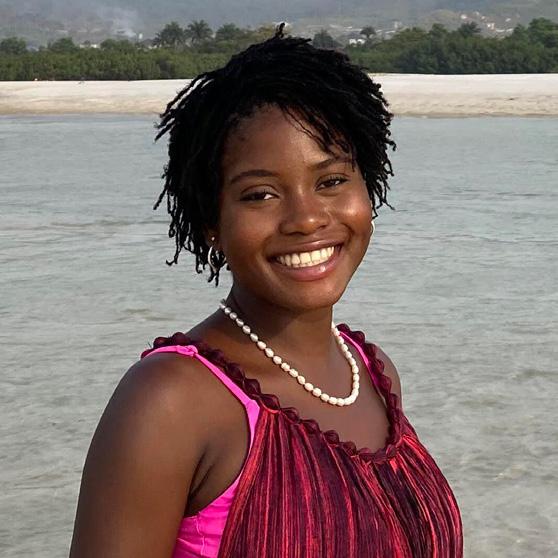
Amazing Alumni Investment in Action
72 new endowed scholarships
THE KRAVIS OPPORTUNITY FUND has an outsized impact on CMC students by removing a wide array of financial barriers beyond the cost of attendance. Since 2018, the foundational gift from Henry ’67 and Marie-Josée Kravis has included kick-off funding for high-need students, a first-year and sophomore summer experience for every student on need-based financial aid, removal of home equity, and travel and emergency funding.
Increased gift-funded financial aid resources by 46 percent
Increased Pell Grant-eligible students from 10% to 18%
Increased first-generation students from 9% to 17%
36
The CMC Career Readiness Effect
In 2022, CMC was identified as one of the leading liberal arts colleges for value, according to data published in Forbes. The study, based on analysis of data from the U.S. Department of Education’s College Scorecard and the Integrated Postsecondary Education Data System (IPEDS), found that CMC graduates are able to pay back their education in only 1.5 years. Since 2016, 97 percent of new graduates have consistently reported that they have defined plans six months after commencement. The median starting salary for CMC alumni: $87,000.

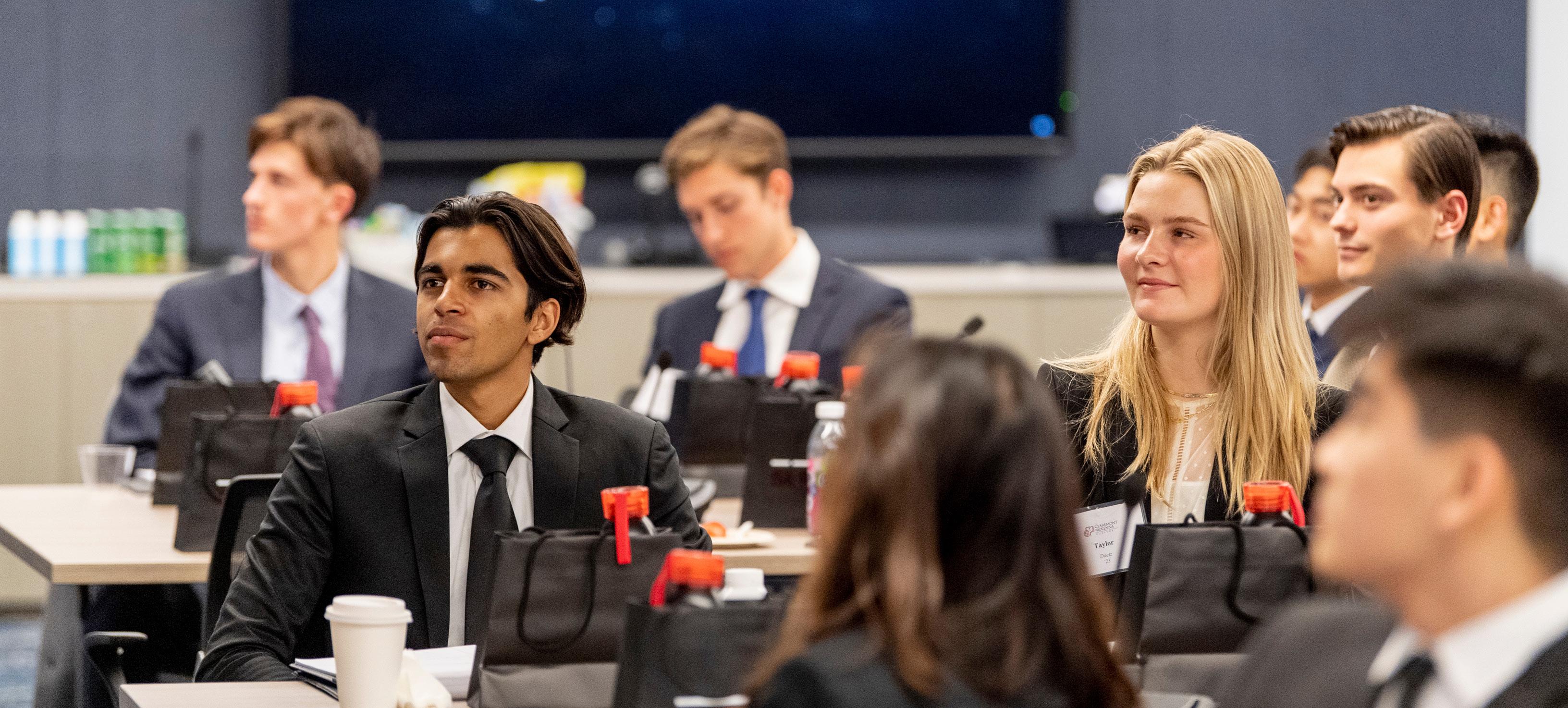
37
Amazing Alumni
1,350 alumni hosting students during networking treks
1,109 alumni panelists and meet-up participants
916 alumni job shadow hosts

226 on-campus recruitment events (held with alumni)
Compiled from data since 2017
Shaw Wagener ’81 believes in a simple view of personal development—Learn. Earn. Return. By helping students at “a time of their most important learning”—the CMC years—he hopes to be setting them up for a “wonderful opportunity to return to others.”
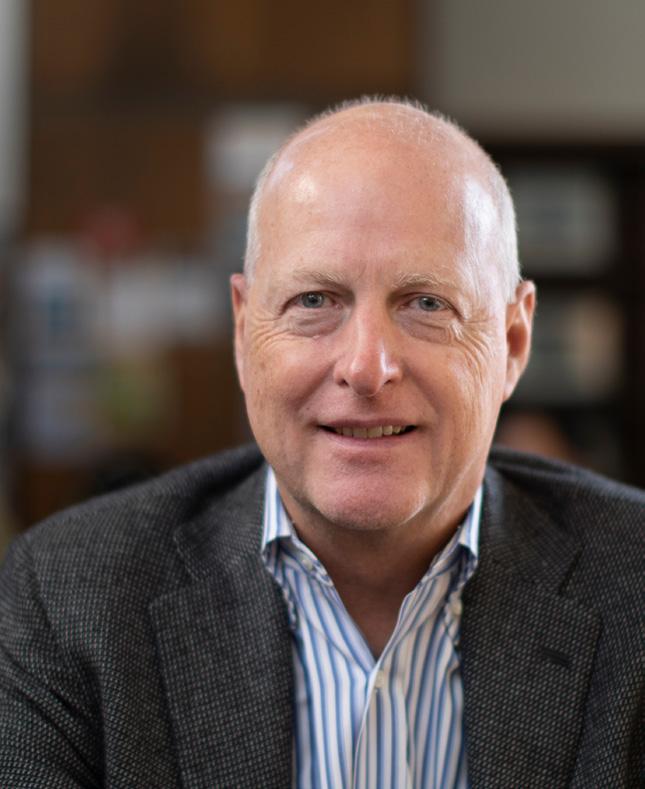
“It’s why I believe expanding opportunity is what CMC is all about—especially for students to learn about themselves and the world,” said Wagener, a CMC Trustee and namesake of the Wagener Family Global Scholars, a Scholar Community that provides financial support for first-year summer internships and study abroad opportunities. “CMC does such an excellent job of creating opportunities for students to gain broader perspectives and challenge their own preconceptions of the world through interaction with faculty, invited speakers, and a diverse, intelligent, and motivated student community.”
Wagener said he is blessed to learn more about the world every day—and is particularly grateful to be in a position to return to others a chance to carve out their path to global understanding. “This is how we create emerging leaders. And make the world a better place.”
38
EXPAND OPPORTUNITY
MC had the honor of ringing the New York Stock Exchange closing bell on Aug. 17, 2023 in recognition of more than 75 years of preparing students for thoughtful and productive lives and responsible leadership in business, government, and the professions.
Led by President Hiram Chodosh and Doug Peterson ’80 P’14 P’15, CMC Trustee and President and Chief Executive Officer of S&P Global, a contingent of CMC students, alumni, staff, Trustees, and parents rang the bell with wide smiles from the NYSE podium while enthusiastic supporters cheered from the trading floor below.
The NYSE bell-ringing marked another ambitious milestone for the College and its continued commitments to student success—while further celebrating the thousands of CMC alumni who have led major enterprises, driven innovation, and made significant leadership contributions to the world.
I want to make sure that the students at CMC today have the same opportunities that I did. We’ve always said, we’re trying to not just invest in the future. We’re trying to define the future.
– DOUG PETERSON ’80 P’14 P’15 PRESIDENT AND CEO OF S&P GLOBAL
C
39

40
hat moves me to support student opportunity at CMC? It
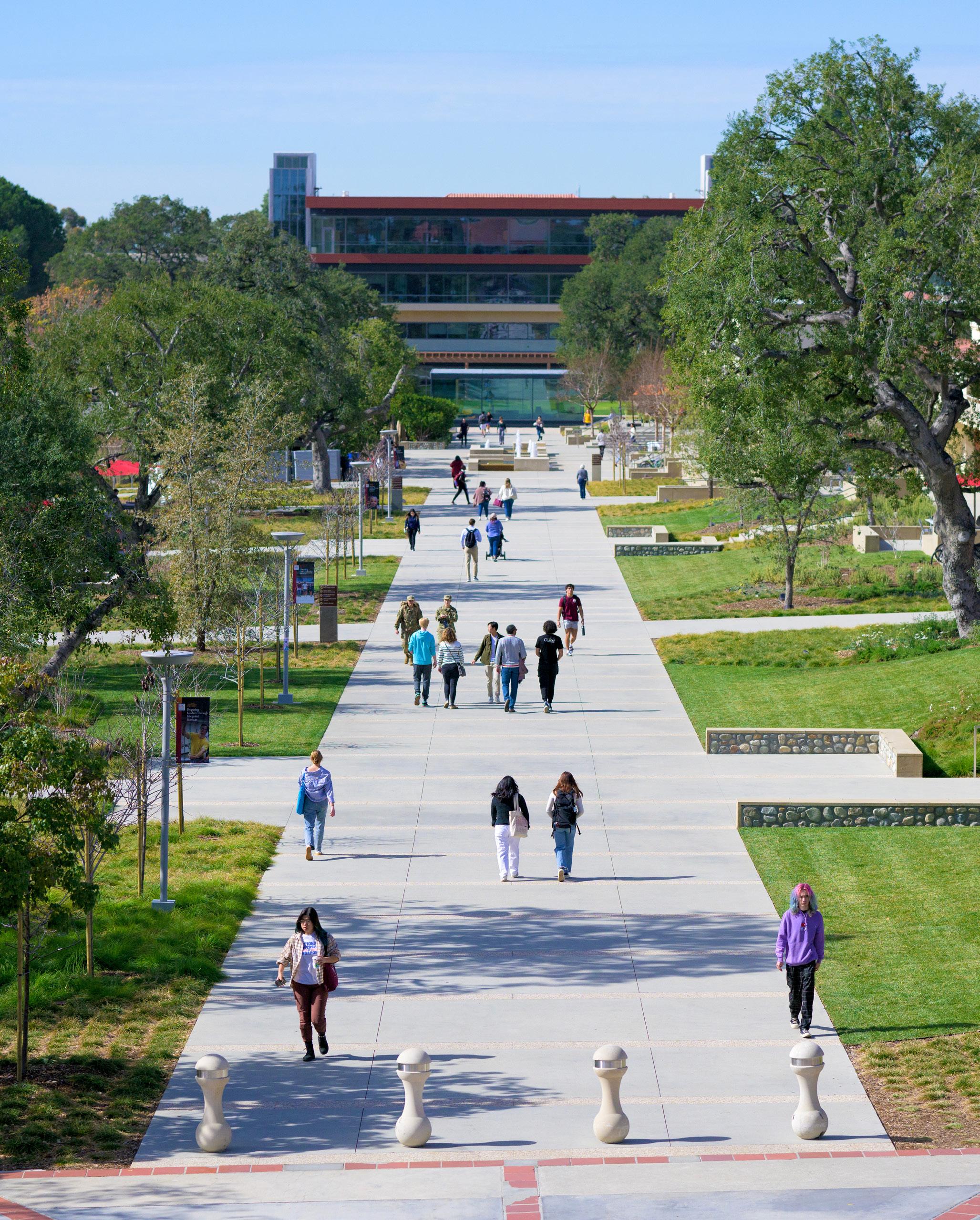
Whas evolved over the years.
At first, it was because I missed college and the 24-7 friendships and intellectual stimulation.
At times, I have given back out of deep gratitude for the lessons and opportunities I received from CMC, its faculty, and staff. Professor John Roth still lives in my head and counsels me about courage and ethics when I most need that guidance. Courses like Marx, Darwin, and Freud: The Structure of Scientific Revolutions gave me the tools to understand what it means to live blindly in one paradigm even when a radically different reality has already started to form.
Sometimes my volunteer service has been selfish. CMC introduced me to so many of my favorite people on the planet. I have the most fun when I am visiting with my friends or even with alumni I’ve never met before. We are a diverse and interesting crew and I never tire of conversations with Claremont grads.
41
But I confess that I now give with more passion than ever before. Why? Because I am very nervous. This life-long optimist now wakes up with a pit in my stomach. My motivation is now based in my increasing concern about the future of our democracy, our human civilization, and our planet. From a constitutional crisis to a climatedriven crisis to a public health crisis to a gun violence crisis almost every week, we seem to be teetering on the edge.
We have experienced complex challenges before. But I used to have greater faith in the trajectory of our U.S. and global institutions to address the hard issues. Now, our crises seem to multiply and escalate every single day. And there are apparently too few leaders in government, business, and the professional sectors with the skills required to solve, persuade, and implement necessary fixes.
CMC offers a truly unique, interdisciplinary approach to training leaders. I am awestruck by the talented young alumni I meet. They are so poised and ready to solve complex problems. I’m equally amazed by our alumni of every generation, led—in many ways—by the Greatest Generation.
I give to CMC so that our incoming students will receive an increasingly fabulous and transformational education so they will be prepared to tackle big problems and recruit a sufficient following to implement needed solutions. I also believe CMC’s approach to integrated sciences has the potential to transform the very definition of modern liberal arts education. We need to graduate students who are well-versed in historical lessons, aspirational literature, neuroscientific discoveries, computational techniques, and conflict resolution strategies. We need philosophers who can sort through the ethics of AI and genomic manipulation. We need economists and financiers who can ensure that resources are available to move mountains. We need our scientists to be able to analyze, discover, innovate, solve, and persuade. Best of all, the fact that CMC’s Kravis Department of Integrated Sciences is focused on the big socio-scientific issues of our time will give students the opportunity to practice saving the world.
It is not surprising that I am also passionately dedicated to an Open Academy that protects
free expression, revolutionary academic pursuits, and a very broad spectrum of perspectives on campus. In most instances, CMC alumni have the ability to listen well, debate civilly, find common ground, and agree to disagree without losing respect for their debate opponent. Collins debates are passionate! But they are followed by doughnut runs, late night beers, and laughter. That ability to disagree and still love is, in my view, perhaps the most essential ingredient for our global survival over the next century.
More than anything, our world needs leaders who do not shame, discriminate against, writeoff, belittle, marginalize, or demonize those with whom they disagree. We need wise, smart, collaborators with lots of mad skills.
And that is why I support student opportunity and the educational mission of CMC.
Laura Grisolano ’86 is a CMC Trustee and founder and president of Bridge Mediation and Leadership Solutions.

42 EXPAND OPPORTUNITY
The Campaign for CMC: Responsible Leadership
INVESTMENT = IMPACT
$367,441,940 secured in new gifts and commitments to honor our leadership mission, endowing for future generations Claremont McKenna’s distinctive model of undergraduate education


MAJOR MILESTONES
2015
» The Public Art Program at CMC begins with the acquisition of Mary Weatherford’s From the Mountain to the Sea at the Athenaeum. Five more major installations— Meet in the Middle (2016), Totem (2017), Four Sculptures (2019), Modified Social Benches (2022), and Qwalala (2023)—follow.
2016
» Roberts Pavilion opens.
» Dean of Students initiates a new series of engagement and self-authorship strategies.
» The CARE Center opens.
» The Scholar Community program begins.
2017
» The newly renovated Soll Center for Student Opportunity opens.
» The Sponsored Internships and Experiences (SIE) program is redesigned.
$415,736,639 secured in new gifts and commitments to prepare future leaders through integrated sciences, raising the technical and scientific fluency of all students to tackle the socio-scientific grand challenges of the day
2018
» The Kravis Opportunity Fund is established.
» The Open Academy launches.
» Eggert Dining Room is named at the Athenaeum.
» Romero Success Coaches program begins through Dean of Students.
2019
» Summer research funding is established.
» CMC acquires full 75 acres of "The Pit," an undeveloped parcel across Claremont Boulevard.
43
$292,896,585 secured in new gifts and commitments to expand transformative student opportunities, recruiting the top emerging scholar-leaders regardless of financial need and removing barriers to the full, four-year Claremont McKenna experience
TOTAL NEW PHILANTHROPY:
$1,076,075,164
CMC is the first liberal arts college to pass $1 billion in a single comprehensive campaign
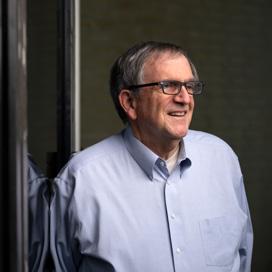
2020
» The Randall Lewis Center for Innovation and Entrepreneurship is named.
» The Presidential Initiative on Anti-Racism and the Black Experience in America launches.
» CMC adds a Data Science major to an already popular sequence.
2021
» CMC begins celebrations for its 75th Anniversary.
» Robert Day Sciences Center is announced.
2022
» Kravis Department of Integrated Sciences is announced.
» The Roberts Campus expansion is announced.
» Claremont Hall is renamed Valach Hall.
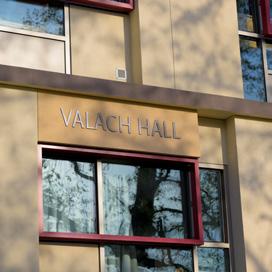
» The Kravis Center Living Room is renamed The Massoud.
» Robert Day Sciences Center officially breaks ground.
2023
» CMC’s float wins the Golden State Award for Most Outstanding Depiction of Life in California at the 134th Rose Parade®.

» First faculty cohort for Kravis Department of Integrated Sciences is hired.
» CMC completes its Campaign for Responsible Leadership with a record-breaking total of over $1 billion, the largest ever fundraising campaign for liberal arts colleges.
44
The Campaign for CMC: Responsible Leadership
INVESTMENT = IMPACT
8,392 alumni made at least one gift
2,119 alumni made their first-ever gift to CMC


1,585 alumni gave every year of the Campaign
65% of the total alumni base represented
The median donor gave a total of $220
Donors of under $5,000 represent nearly 90% of the Campaign total
115 first-time leadership donors of $100,000
12,269 donors made at least one gift to CMC
45
Trustees
CMC gratefully acknowledges the significant time, talent, and treasure that the Board of Trustees contributes in order to enhance the educational experience of CMC students. Board members listed here are currently serving terms as of September 2023. We thank them—and all former Trustees—for their service and leadership.
Chair of the Board
David Mgrublian ’82 P’11
President
Hiram Chodosh
Regular Trustees
Peter Barker ’70 P’01
Todd Barker ’01
Jim Bemowski ’76 P’07 P’09M’10
Steve Bullock ’88 P’24
Steve Crown ’74
Tina Daniels ’93
Cary Davidson ’75
Robert Day ’65 P’12
David Dreier ’75
Steve Eggert ’82 P’15
Elyssa (Getreu) Elbaz ’94
Laura (May) Grisolano ’86
David Hetz ’80 P’10
Sue Matteson King ’85 P’18
Jeff Klein ’75 P’08 P’11 P’14
Henry Kravis ’67

Duane Kurisu P’08
Michael Larson ’80
Tao Li ’02
Jim McElwee ’74 P’12
Harry McMahon ’75 P’08 P’09
Marci Lerner Miller ’89 P’19 P’20
Akshata Murty ’02
Paul Nathan ’80
Donna Wengert Neff P’21
Doug Peterson ’80 P’14 P’15
Rey Ramsey
Jeff Records ’81
George Roberts ’66 P’93
RJ Romero ’89
Rossi Russell ’71
John Shrewsberry ’87 P’24
Darrell Smith ’74 P’00
Bruce Soll ’79 P’12 P’15 P’17
Ken Valach ’82
Shaw Wagener ’81
Alumni and Ex Officio Trustees
Allison Aldrich P’24
Eric Fujimoto ’93 P’24
Stella Ho ’97
Tendo Nagenda ’97
Scott Torrey ’91 P’23 P’26
Life and Honorary Trustees
Gary Biszantz ’56 P’08
Barbara Boswell
Abbott Brown P’00
Dick Butler
Joe Casey P’81 P’85 P’88 P’95 GP’20
Jack Croul ’49
Marv Drew ’51 P’75 GP’05
Glenn Hickerson ’59
John Isaacson
Tom Leppert ’77
Perry Lerner ’65 P’89 GP’19 GP’20
Bob Lowe ’62
Tom Mitchell ’66
Ken Novack ’67
Bill Podlich ’66 GP’26
Fred Prager P’99 P’01
Jack Stark ’57 GP’11
Chris Walker ’69
Buzz Woolley ’59 P’90 P’92
Special Advisor
Bob Nakasone ’69 P’98
The College would like to thank the following Trustees and former Trustees for their service on the Trustee Sciences Advisory Group of the Academic Affairs Committee. Their roles were integral in shaping and planning the future of integrated sciences at CMC.
Hiram Chodosh
Elyssa (Getreu) Elbaz ’94

John Isaacson
Jim McElwee ’74 P’12
David Mgrublian ’82 P’11
Harriet (Black) Nembhard ’91
Fred Prager P’99 P’01
Ken Valach ’82
CMC mourns the loss of Mr. Robert Day ’65 P’12, a dedicated leader of his beloved College for nearly 60 years. The content in this publication precedes his passing. Mr. Day will be memorialized in a future edition of CMC Magazine. An online tribute can be viewed at www.cmc.edu/Robert-Day-InMemoriam.
46

THE POWER of COMMUNITY
You did this. We did this. Thanks to our entire community, The Campaign for CMC: Responsible Leadership secured nearly $1.1 billion from more than 12,000 donors.
Your dedication to CMC is the heart of our success.

48
efore we look forward—and there’s a lot to look forward to at CMC—we owe it to ourselves to look back.
We officially started The Campaign for CMC: Responsible Leadership on July 1, 2015. Since that time, the collective power of our community—including participation from over 65 percent of our alumni—has allowed us to build upon so many important milestones and initiatives.
While I’m tremendously proud of how the CMC community gave its time, talent, and treasure to make this Campaign successful, I am most grateful for the many human moments that brought us together to celebrate as one voice and one mission.
The “oohs” and “ahhs” when the Class of 2016 got a sneak peek of Roberts Pavilion. The dedication of rain-drenched supporters during the ribbon-cutting for the revamped Soll Center for Student Opportunity. The screams of joy as we watched our Athenas capture volleyball’s first national championship. Countless conversations in the Eggert
Dining Room of the Athenaeum. The Kravis Opportunity Fund bus arriving to campus on Family Weekend.
A pandemic. Trustee RJ Romero ’89 helping a student ship her car home on a moment’s notice. Virtual wine tastings. The smell of hand sanitizer. Filling vials of “pond” water to send to remote students on their birthdays. Six-feet wide blankets. Outdoor classrooms.
And then the rally. Celebration Weekend reunions for the classes of 2020 and 2021. Our largest alumni weekend ever for our 75th Anniversary! Three CMC presidents triumphantly together on stage. The impromptu dawn meeting of Bob McCrary ’58 P’92 and John Poer ’58 P’90 in front of CMC’s award-winning Rose Parade® float. More national championships. The heartfelt stories shared by countless alumni at The Massoud naming. The sounds of construction of the Robert Day Sciences Center. Pushing the closing bell of the New York Stock Exchange with pride-filled supporters watching from the floor and from afar.

B
49
This is what I love most about CMC: the strength of our community. When we put our minds to something, we do it—together!
This is what I love most about CMC: the strength of our community. When we put our minds to something, we do it— together! In 2019, our CMC Strategy gave shape to this record-breaking Campaign by establishing three core priorities— Honoring Our Leadership Mission, Preparing Leaders Through Integrated Sciences, and Expanding Student Opportunities. This balance of sustaining our current excellence; preparing future generations to address the socio-scientific challenges of our time; and safeguarding access and affordability to the full CMC experience ensures we will continue to prepare students for thoughtful and productive lives and responsible leadership in business, government, and the professions.






Looking forward, there is so much to keep us engaged and inspired. We are already living with the investments and results of this powerful Campaign, with the best yet to come.



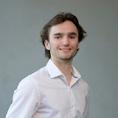





 Michelle Chamberlain is the Vice President for Advancement and Student Opportunities and Dean of the Robert Day Scholars Program.
Michelle Chamberlain is the Vice President for Advancement and Student Opportunities and Dean of the Robert Day Scholars Program.
















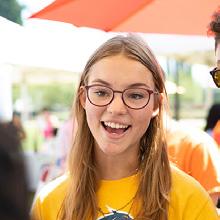




























50
CMC Honor Roll: Fall 2023

Acknowledgements
Campaign Leadership

Chair of the Board
David Mgrublian ’82 P’11
President
Hiram Chodosh
Co-Chairs
Steve Eggert ’82 P’15
David Hetz ’80 P’10
Shaw Wagener ’81
Honorary Chairs
Robert Day ’65 P’12
Henry Kravis ’67
George Roberts ’66 P’93
Chair of College Advancement Committee
Jim Bemowski ’76 P’07 P’09M’10
Chair of 75th Anniversary Celebration
Sue Matteson King ’85 P’18
President’s Executive Cabinet
Heather Antecol
Sharon Basso
Matthew Bibbens ’92
Michelle Chamberlain
Jennifer Sandoval-Dancs
James Floyd
Marcie Gardner
Dianna Graves ’98
Nyree Gray
Megan Jordan P’27
Kimberly Shiring
Erin Watkins
Advancement Leadership
Michelle Chamberlain
Andrew Carrillo
Megan Jordan P’27
Evan Rutter ’06
Ray Watts
Strategic Communications and Marketing
Editorial
Thomas Rozwadowski
Visual
Anibal Ortiz
Design
Jay Toffoli
Contributors
Anne Bergman
Karina Ramirez del Real ’22
Valerie Ramos
Gilien Silsby
Isaiah Tulanda ’20
Malia Whitenack
51






58
To PREPARe students for thoughtful and productive lives and responsible leadership in business, government, and the professions
I
THE CAMPAIGN FOR CMC | RESPONSIBLE LEADERSHIP

























 —DIANNA “DT” GRAVES ’98, VICE PRESIDENT OF STUDENT AFFAIRS
—DIANNA “DT” GRAVES ’98, VICE PRESIDENT OF STUDENT AFFAIRS















































































 Michelle Chamberlain is the Vice President for Advancement and Student Opportunities and Dean of the Robert Day Scholars Program.
Michelle Chamberlain is the Vice President for Advancement and Student Opportunities and Dean of the Robert Day Scholars Program.




















































